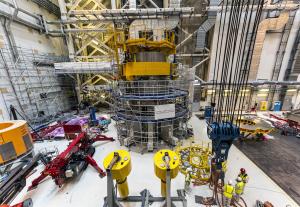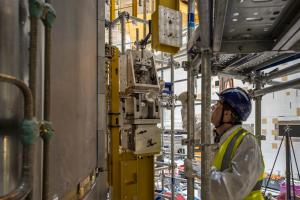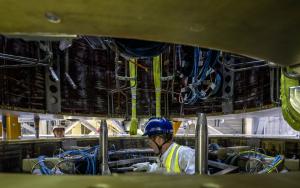For operations as strategic as installing ITER components and systems, precision is taken into account long before platforms and tooling are installed. "In terms of precision, nothing is trivial," specifies Cormany. "The formulation of the concrete that anchors the platform plays a part, as does the way bolts are tightened." For a specialist in superconductivity, this is a new domain of expertise.
A third central solenoid module was received at ITER in June and a fourth is expected to ship before the end of the year. In total, US ITER contractor General Atomics is providing seven modules to the ITER Organization, one of them a spare.




